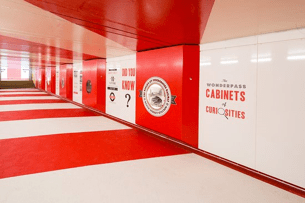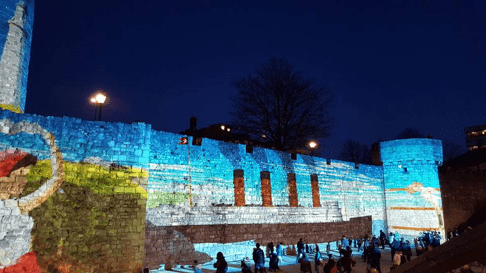Placemaking: How it can change a place
Contributed by We Are Placemaking
As described by Project for Public Spaces, placemaking is a process that “inspires people to collectively reimagine and reinvent public spaces… strengthening the connection between people and the places they share”. It is a practice through which we enliven the public realm beyond the architectural design to establish an atmosphere and environment that both represents and supports the community through live architecture. To be successful, placemaking has to consider the heritage of the area, existing organisations and what will unite the community through activations and experiences that form an exciting and relevant destination.
Evolving a place’s identity
 The way in which we can ‘change’ a place is not necessarily removing its identity and replacing it with a new one. It is a way of evolving place identity and celebrating heritage, whilst inviting new and exciting creative ideas that instil a sense of pride and gauges interest in the area. A simple example of this could be seen at Baker Street Underground station in London. What would have been a grey underground tunnel has been turned into a bright and colourful storytelling piece, seen daily by commuters, locals and tourists alike. This form of installation utilises existing infrastructure and draws it in to a wider placemaking piece that not only informs passers-by, but also creates shareable content that may draw a wider reach. It makes a walk through a quiet tunnel a memorable experience that links directly into the heritage of Baker Street.
The way in which we can ‘change’ a place is not necessarily removing its identity and replacing it with a new one. It is a way of evolving place identity and celebrating heritage, whilst inviting new and exciting creative ideas that instil a sense of pride and gauges interest in the area. A simple example of this could be seen at Baker Street Underground station in London. What would have been a grey underground tunnel has been turned into a bright and colourful storytelling piece, seen daily by commuters, locals and tourists alike. This form of installation utilises existing infrastructure and draws it in to a wider placemaking piece that not only informs passers-by, but also creates shareable content that may draw a wider reach. It makes a walk through a quiet tunnel a memorable experience that links directly into the heritage of Baker Street.
Inclusive, interactive, accessible
Successful placemaking is inclusive, interactive and accessible; key considerations when looking at how to activate and unify a place through creative concept development. A successful example of this is Hammerson’s WestQuay site in Southampton, in the south of England, which We Are Placemaking delivered in 2017. This was launched with a bespoke projection mapping project that told the story of Southampton, displayed on the original city wall. This not only instilled a sense of civic pride, but the event’s success meant it has since become an annualised event and holds a firm position in the city’s calendar. It has grown to have an engagement rate of 127,000 over 10 days with visitors. And what’s more, it brings the community to the heart of the newly developed public realm. We Are Placemaking have since delivered three further Light Festivals with Hammerson in this space, as well as Europe’s largest temporary maze, Wimbledon screenings and a sensory garden. These events deliver surprise and delight experiences that are accessible and enjoyable for all. They have also provided increased footfall and positive engagement with the local and wider community as well as increased dwell time.
 This form of event also boosts the space as a destination, driving footfall beyond the local reach and supporting local businesses and surrounding tenants through non-competitive activation. It takes an area that could be left as open and empty space and creates a buzz and excitement that makes people want to come and spend time with family and friends. Creative experiences also create content that delivers beyond the local area as part of a wider social character.
This form of event also boosts the space as a destination, driving footfall beyond the local reach and supporting local businesses and surrounding tenants through non-competitive activation. It takes an area that could be left as open and empty space and creates a buzz and excitement that makes people want to come and spend time with family and friends. Creative experiences also create content that delivers beyond the local area as part of a wider social character.
Another way in which this form of activity changes a place, is that it creates a platform for local community involvement- showing off the positive organisations within the area, and in doing so establishing a sense of unity. Placemaking events not only encourage engagement from local art and culture organisations, but also local businesses who link into overarching themes and activities.
How placemaking revitalises a destination
Placemaking changes a place in a way that supports its unique heritage and place identity, whilst creating inclusive and sharable experiences that ultimately form a destination. This, as mentioned in The Political Economy of Informal Events, then transcends into a wider positive impact that drives direct and indirect spend in the local area, be it local retail and F & B or hotels and transport. Furthermore, it has a positive social implication that unites communities and creates a sense of place.
Related reading:
How placemaking and policy innovation is revitalising city centres









